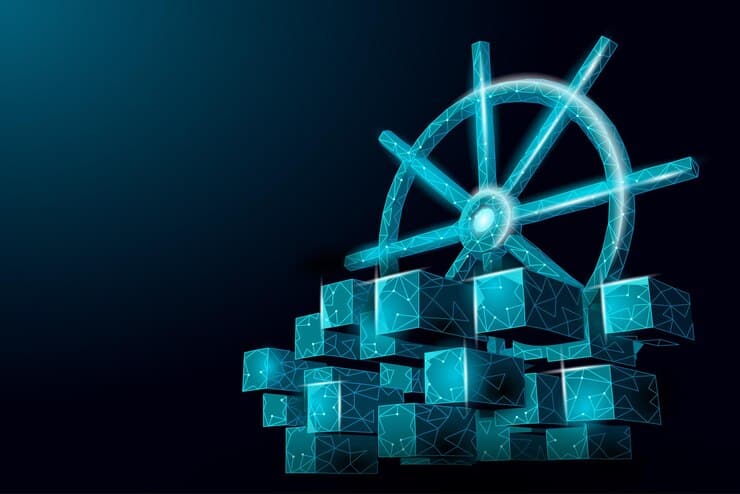Over the last couple of years, Kubernetes has become a pivotal system in cloud technologies for a growing number of businesses. With 93% of organizations using or planning to use containers in production, and more than 5.6 million developers now utilizing Kubernetes, it’s revolutionizing how companies deploy, manage, and scale their applications through robust container management. However, its sophistication introduces security challenges. The configurations and dynamic aspects of Kubernetes increase the risk of data breaches, system failures, and operational errors. These vulnerabilities emphasize the critical need for the implementation of Kubernetes disaster recovery best practices, which should be an integral part of any security plan in this environment.
Integrating Tailored Solutions and Automation
The complexity of Kubernetes requires an effective and adaptable disaster recovery strategy, especially considering the findings of the 2022 MSP Threat Report by ConnectWise. This report revealed that two out of three midsize businesses had suffered a ransomware attack in the past 18 months, highlighting the vulnerability of organizations to data loss due to insufficient disaster recovery measures. This alarming rate of ransomware attacks underscores the need for comprehensive planning that not only addresses Kubernetes’ unique deployment and scalability challenges but also adheres to best practices in disaster recovery, which is crucial for mitigating these risks and ensuring data integrity.
You can learn more about Kubernetes disaster recovery in our in-depth guide.
Top 8 Kubernetes Disaster Recovery Best Practices
1. Native Integration for Enhanced Recovery
Embrace Kubernetes Disaster Recovery Best Practices by choosing a disaster recovery solution specifically designed for Kubernetes cloud-native architecture. Such solutions acknowledge the intricate interdependencies between microservices, ensuring the comprehensive recovery of all data, components, and resources. They capture the full state of applications, significantly minimizing the risk of data loss or corruption.
2. Strategic Planning for Resilience
Implementing a Kubernetes disaster recovery strategy requires a well-documented approach. This involves determining the locations for storing backups and deciding between manual procedures or automated tools to reduce human error. A clear, detailed disaster recovery strategy, including protocols for restoring applications, is essential to expedite recovery and diminish confusion during crisis scenarios.
3. Automation: The Bedrock of Effective Recovery
Automation is critical in Kubernetes disaster recovery, as it ensures operations are restored with precision and efficiency. For instance, in the event of a Kubernetes cluster suffering data corruption due to a software bug, an automated recovery system can swiftly restore operations using application-aware backups. These backups are designed to understand the application’s state at the time of backup, facilitating a more thorough and seamless recovery process.
4. Application-Aware Backups for Kubernetes
In Kubernetes, where portability can create backup and disaster recovery complexities, application-aware backups are invaluable. They capture all the data in memory and in-process transitions, backing up the application in a consistent state. This ensures that the application is immediately available and functional upon recovery.
5. Fortifying Backup Security
Prioritize security in your backup processes. Implement identity-access management, role-based access control (RBAC), and data encryption to safeguard against unauthorized access and potential breaches. Following cybersecurity best practices, such as those recommended by the Cybersecurity and Infrastructure Security Agency (CISA), is crucial. These may include network separation and stringent authentication protocols.
6. Flexibility and Repeatability in Disaster Recovery
Your Kubernetes disaster recovery strategy must be both repeatable and adaptable. Automated solutions foster consistency and minimize errors, establishing a reliable process that’s easy to communicate and understand. Given the varied nature of Kubernetes distributions and the different types of databases and infrastructure they may run on, your disaster recovery solution should be database-agnostic and flexible enough to adjust as your requirements evolve.
7. Continuous Improvement and Regular Testing
The use of Kubernetes demands continuous improvement in your disaster recovery plan. Regular testing is vital to assess the plan’s effectiveness. By simulating data loss scenarios in controlled environments, organizations can identify weaknesses and make necessary adjustments. This should include updating the plan to integrate new Kubernetes features or changing compliance requirements, ensuring that the disaster recovery strategy remains both current and robust.
8. Optimizing Kubernetes Storage Management
In order to have an effective disaster recovery strategy, it’s also crucial to incorporate Kubernetes storage best practices. This involves choosing appropriate storage solutions that match Kubernetes applications’ performance and scalability requirements and ensuring data persistence. By implementing these storage practices, organizations strengthen their disaster recovery plans, enhancing resilience against disruptions and data loss, and maintaining the integrity of their Kubernetes operations.
Conclusion
As businesses navigate the complexities of Kubernetes, the adoption of tailored solutions and Kubernetes disaster recovery best practices becomes crucial. These practices not only mitigate risks associated with data breaches and system failures but also enhance operational resilience. Embracing strategies like native integration, strategic planning, automation, and application-aware backups, complemented by a strong emphasis on security and continuous improvement, forms the backbone of an effective Kubernetes disaster recovery plan. Within this context, Trilio provides a comprehensive and strategic solution. By integrating Trilio, organizations move from a reactive stance to a proactive one, ensuring the resilience and continuity of their Kubernetes environments.

